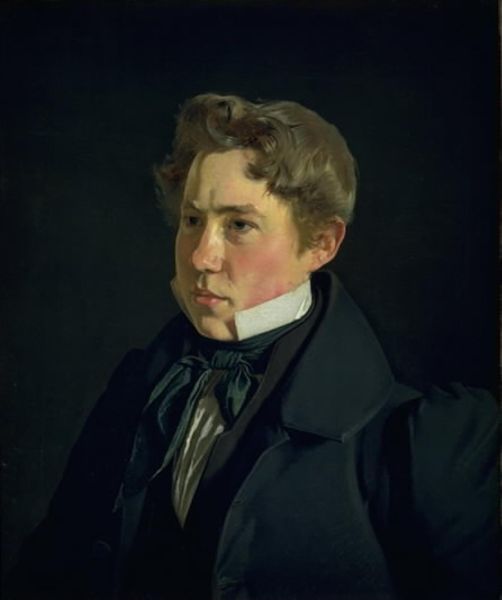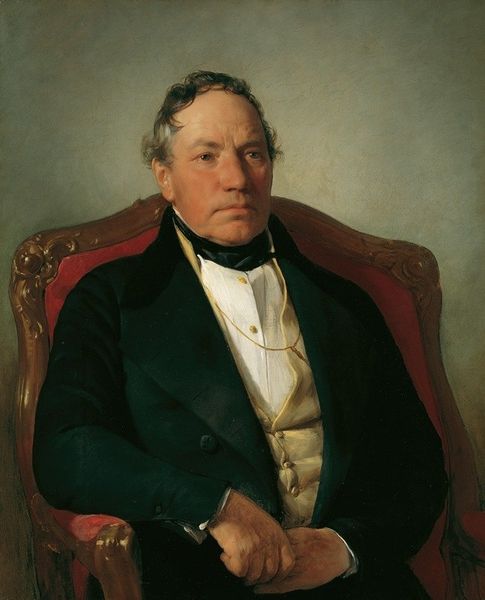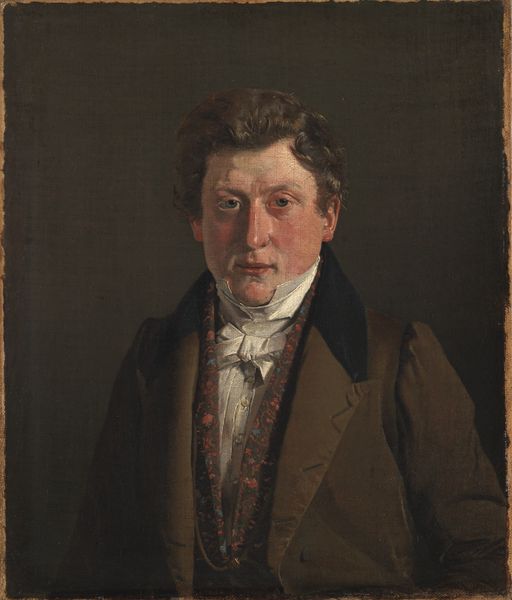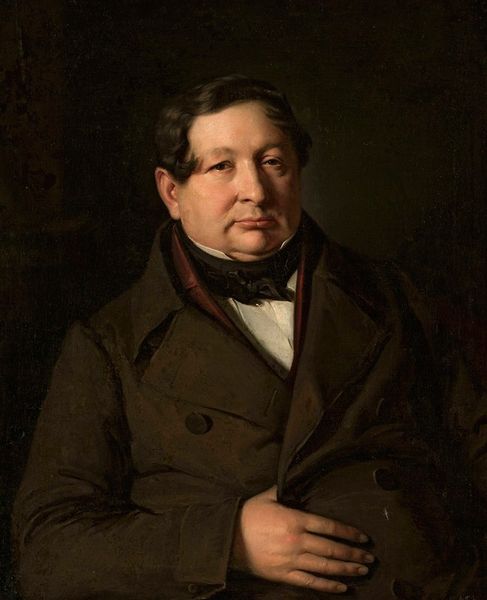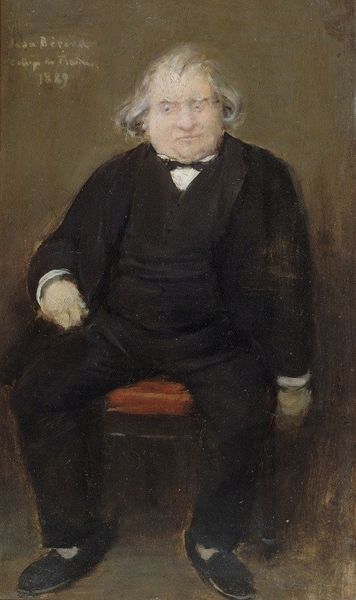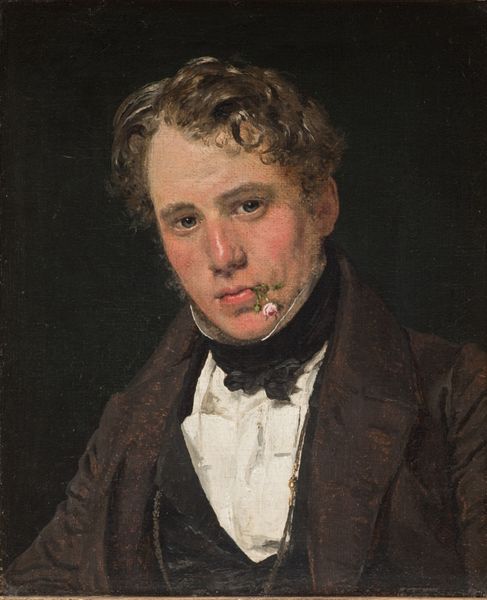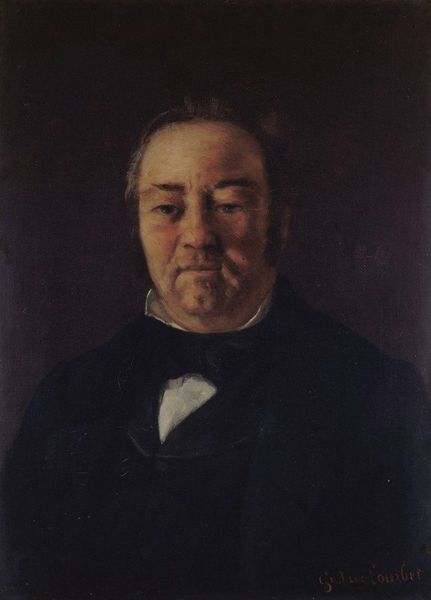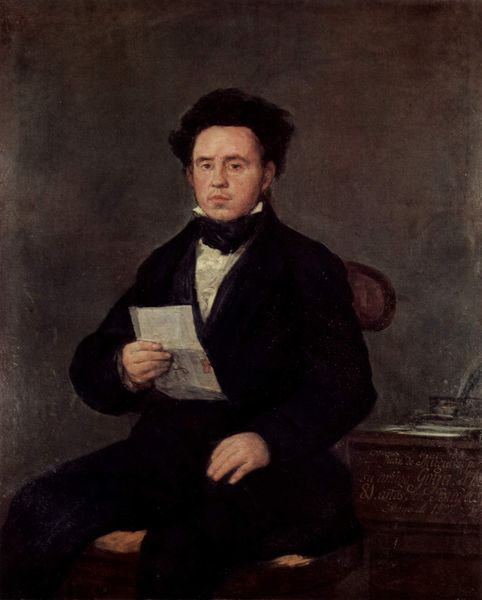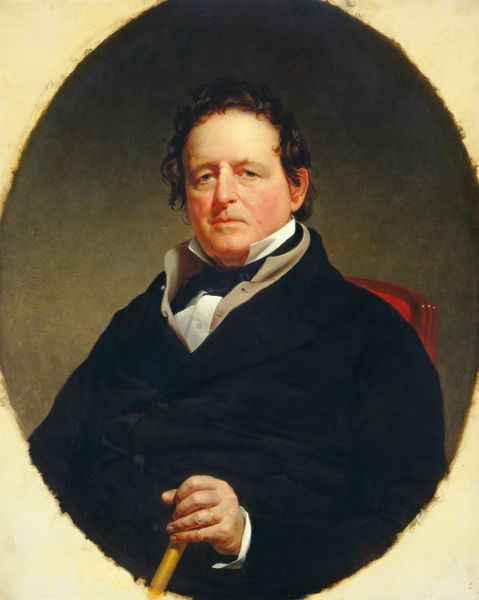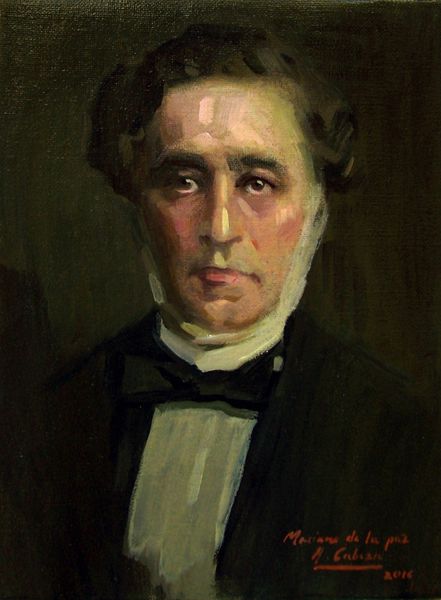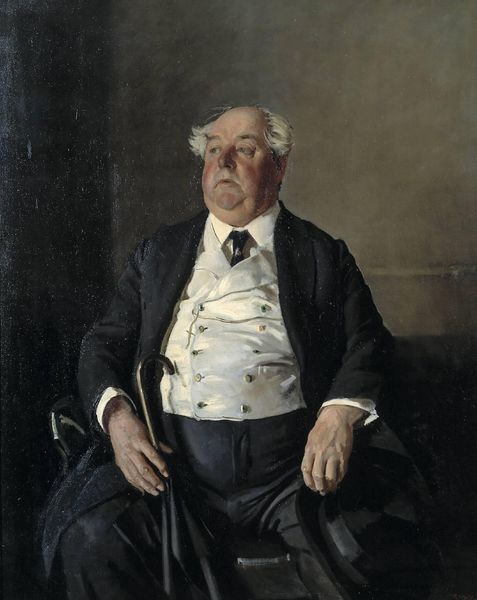
oil-paint
#
portrait
#
impressionism
#
oil-paint
#
oil painting
#
academic-art
#
realism
Copyright: Public domain
Curator: Jules Bastien-Lepage painted this portrait of Simon Hayem in 1875, using oil on canvas. What are your initial impressions? Editor: A certain melancholic gravity hangs over the piece. There is an immediate tension created by the contrast between the sitter's formal attire and the dark, almost oppressive background. I find it somewhat claustrophobic. Curator: I'm drawn to the texture. Look closely at how Lepage has built up layers of paint, especially around the face and hands, using visible brushstrokes. The effect is quite dynamic despite the static pose. Consider the subtle use of impasto—it enlivens the surface and models form without reliance on stark value contrasts. Editor: I'd like to understand how the sitter, Simon Hayem, positioned himself within the cultural politics of his era. Lepage created this portrait as a "souvenir", as seen from his inscription on the lower left. As such, this image might convey Hayem's status and alliances in society, using elements of fashion and pose to indicate a certain kind of cultural agency. For instance, does his red ribbon connote an alignment with revolutionary politics or national identity? Curator: Note also the sitter’s rather contemplative, interior gaze. The painting presents a clear and well-ordered arrangement, the subject occupying a clear focal point, grounded against the dark background. The formal qualities give an air of respectability. This structured pictorial space seems quite purposeful. Editor: Perhaps, but how does the sitter perform respectability? A portrait is always a collaboration, and I wonder about the power dynamics involved. How might his identity—religious, professional, familial—intersect with societal expectations, influencing both his self-representation and Lepage’s portrayal of him? The darkness in the background could be seen as both an aesthetic and a metaphorical device: obscuring and thus subtly hinting that our sitter may come from the shadows of a minority class, which might, indeed, also subtly inform a critical, intellectual perspective. Curator: Ultimately, the interplay of line, colour, and form creates a powerful study of human character. One that seems as equally rooted in technical mastery as it does an exercise of careful compositional control. Editor: Agreed. And it pushes me to consider the relationship between visibility, representation, and historical narrative within the framework of 19th-century portraiture. Thanks for sharing this fascinating glimpse into a bygone era!
Comments
No comments
Be the first to comment and join the conversation on the ultimate creative platform.
